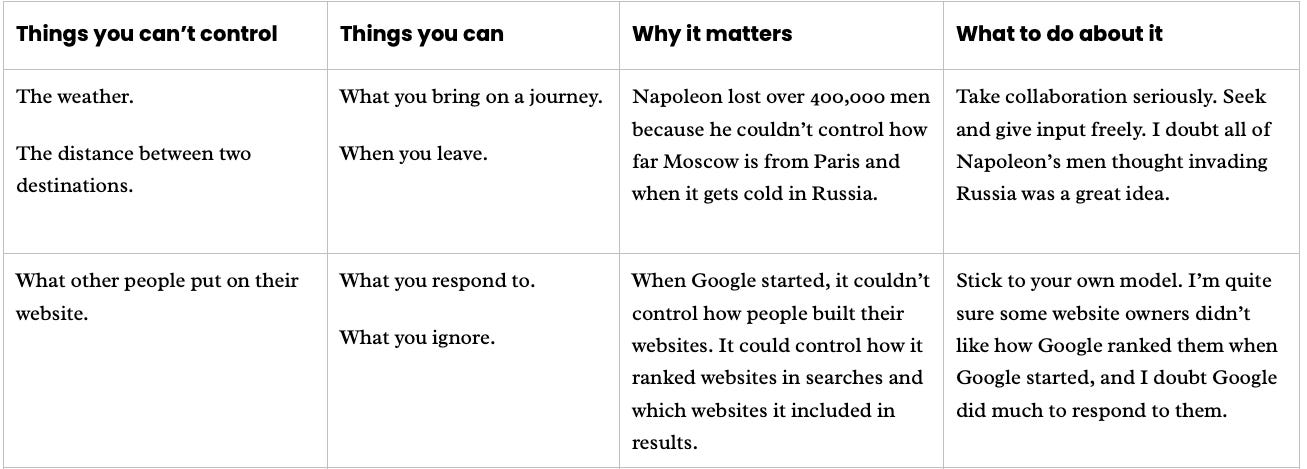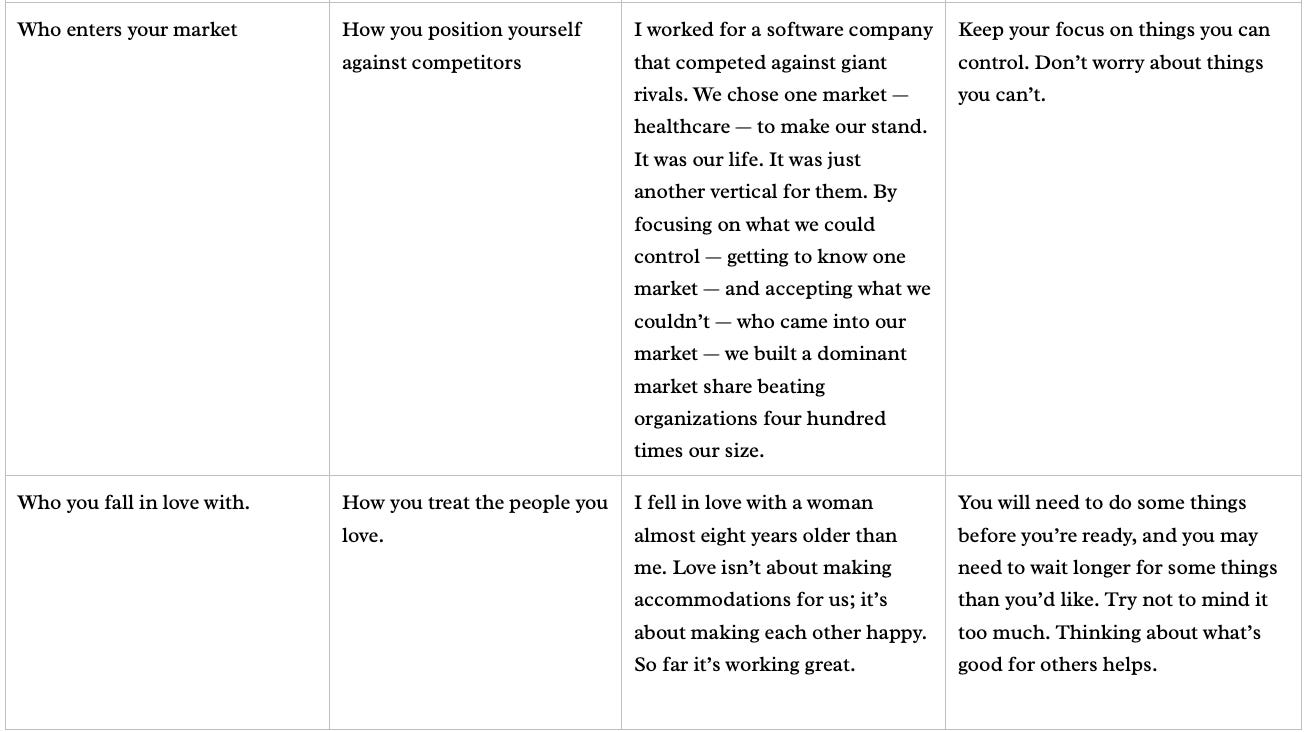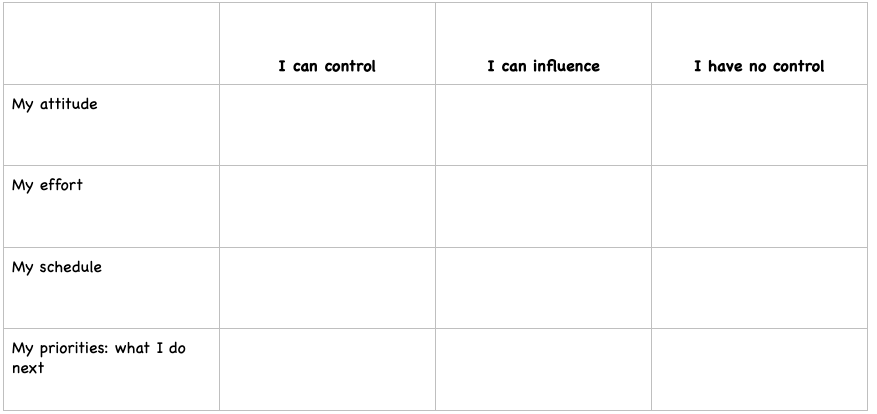Chapters in Charts
My take on business book poetry
One of the great things about poetry is you get to see how two different writers use the same form. The sonnet is probably the most famous poetic form, followed closely by the dirty limerick. Shape poetry is popular in grade schools. A shape poem is a poem where the words form a shape. The chart is either the sonnet or the shape poem of business books.
My book You’re the Product: Use Principles of Recovery and Product Management to Enrich Your Life has lots of charts. I love charts. I love how the eye can scan across a chart and engage with the words in any order. A good chart organizes ideas visually, like a share poem, and thematically, like a sonnet.
Each chapter in the book has two charts. One chart summarizes the chapter, and the other chart guides the reader through an exercise that illustrates the main point of the chapter. I’ve reproduced two charts from the book below. Unfortunately for us, web pages are hell on charts, so I put them in as images. If you have trouble reading them, you’ll just have to buy the book come September.
Here’s my Chapter in a Chart for Chapter 1: Identify what you can and can’t control.
Here’s an exercise chart from the same chapter. I start out simply:
“Look at the list below and decide how you think of each item. Do you have control of it, can you influence it, or do you have no control? Put a √ in the column that describes how you feel about attitude, effort, schedule, and what you do next.”
In a later chapter, I ask readers to write about why they think they can or cannot control something. The chart looks like this:
Here’s what I say about this chart in the book:
“The last column is where the work happens. Take ten solid minutes to think about why you feel the way you do. Write it out for all four items: attitude, effort, schedule, and priorities. Write whatever comes to mind without judging what you’re writing. Maybe you feel like you can’t control your attitude because you’ve been getting bad results. You can still take pride from things like your approach, your discipline, your growing competence and professionalism. A good attitude doesn’t mean you feel good; it means you’re open to the possibility that something good can come from your current situation.”
What do you think? Are the charts helpful? Are they interesting? Let me know in the comments.





